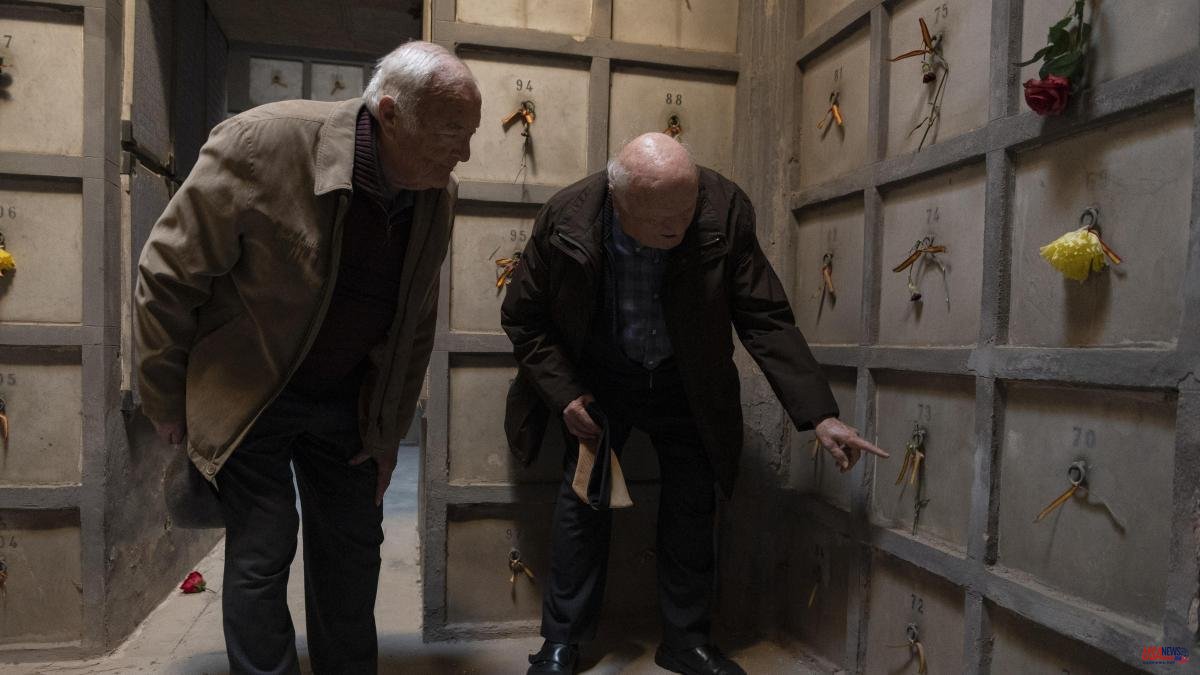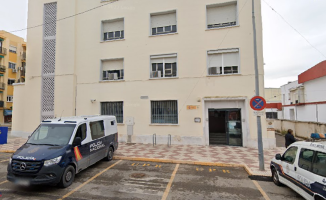Walking through the Les Corts cemetery means taking a journey through the history of Barcelona. One of the largest funerary monuments in the cemetery commemorates the victims of a war conflict of more than a century ago. The remains of more than 720 repatriated soldiers who died in the colonial wars in Cuba and the Philippines, an episode known as the disaster of 1998, rest in a pantheon. The City Council decided to pay for this mausoleum and inaugurated it in 1904. Now, the City Council will soon rehabilitate this crypt and will work on its signage so that it is known more with contributions from the tourist tax.
A large cross with the municipal coat of arms and the inscription 'Barcelona City Council to overseas returnees' presides over this imposing crypt. On both sides there are stairs that, after descending them and going through a door with iron bars, hundreds of perfectly numbered niches appear in various rooms. On some plates, the names and surnames are detailed with the corresponding numbers of the buried people. Even in some columbariums there are bouquets and inscriptions in pencil. “A Romualdo like you admires you and says a prayer for your soul. Year 1955”. This message remembers soldier number 717 Romualdo Díaz.
José Auleda Pujol also rests in this space with the number 73. Two of his descendants are present on this visit, the brothers Sebastià and Josep Auleda, aged 82 and 81 respectively. His ancestor was a cousin of his grandfather's and they found out recently that he was buried here. “It has been a very gratifying surprise. Our relative arrived very ill from the war in Cuba and my father said that he had a stomach ailment from which he cured himself by eating raw snails”, recalls Sebastià. Through the investigations carried out, they have been able to verify that in the General Military Archive of Segovia there is a personal file in the name of José Auleda, who is said to have belonged to the infantry corps and joined the army in 1882. Auleda is an old surname from Catalonia which means holm oak forest and of which there is evidence since the mid-16th century with family origins in Sant Esteve de Palautordera, in the Vallès Oriental.
After this discovery, Sebastià has aroused the curiosity to investigate more about the family origins and he will return to the family tree. “It hurts me not to have known before. Many feelings have been aroused. A flame has been lit and I don't want it to die down”, says Sebastià. His brother Josep will also join in this task: "Until now I had not worried about this matter and from now on I will help him."
Although the official inauguration of the mausoleum was in 1904, an investigation by the historian Daniel Venteo reveals that the project was conceived some time ago. A few weeks before the aggregation of Les Corts to Barcelona in April 1897, the Red Cross obtained from the mayor's office of the still independent municipality a plot of land in the cemetery where the mortal remains of the repatriated soldiers could be deposited, as stated in the documentation of the Municipal Archive of the district of Les Corts.
“The victims of this colonial war especially affected the children of humble families. At that time, the current recruitment system allowed members of wealthy families to redeem compulsory military service by paying the exorbitant amount of two thousand pesetas in cash or paying a substitute, but the vast majority of young people were called up. ”, explains the historian. As for the origin, "we know that the last twenty soldiers incorporated were from Logroño, Plasencia or Madrid, although there are also many Catalan surnames," Venteo points out.
At first, the monument was more modest with an obelisk according to the project of the assistant architect of the City Hall cemetery section Juli Maria Fossas, but later the chief municipal architect Pere Falqués "resized" it to turn it into the mausoleum that it is now. and what "in the beginning would surely have been a common grave was transformed into a tribute and singular recognition of the victims," says Venteo.
Part of the crypt was built with stone from the quarry of the Montjuïc cemetery. "A modest project becomes a project of state dimension since there is no other funerary monument so important with such a high number of victims dedicated to the colonial wars in Cuba and the Philippines," the historian remarks. As a curiosity, the budget for the first project would have cost 1,952 pesetas, almost the same figure that one of these people would have been able to pay to redeem themselves if they had died in the war.
At the time of its inauguration there were 722 niches, although a few more soldiers were added later as more victims continued to arrive. The exact figure is uncertain, there are 725 plates with names and surnames, but between the numbers 726 and 732 there is a written x, something that for Venteo could be a symbolic reference to the unknown soldier because the identity of some is not known. In this place rest the mortal remains of soldiers repatriated from the wars or those who died as a consequence of the war in Barcelona hospitals, such as the Red Cross, the Military Hospital or the Provincial Hospital. Even the handwritten list with the names and the day they were buried is preserved in the Contemporary Municipal Archive.
In addition to adapting the space, the City Council has organized an exhibition at the Les Corts district headquarters until April 30 that recalls the history of the mausoleum and the people buried there. "With this action we carry out a historiographical investigation to contextualize the monument and learn about the historical significance of the pantheon and at the same time we give it light and visibility to give value, dignity and historical memory to the significance in lives represented by the ossuaries of the pantheon," he highlights. the councilor of the district of Les Corts, Joan Ramon Riera. "With the adaptation works we claim one of the great heritage elements of the Les Corts cemetery and work will be done on signage so that visitors have better access and information", concludes the councilor.













